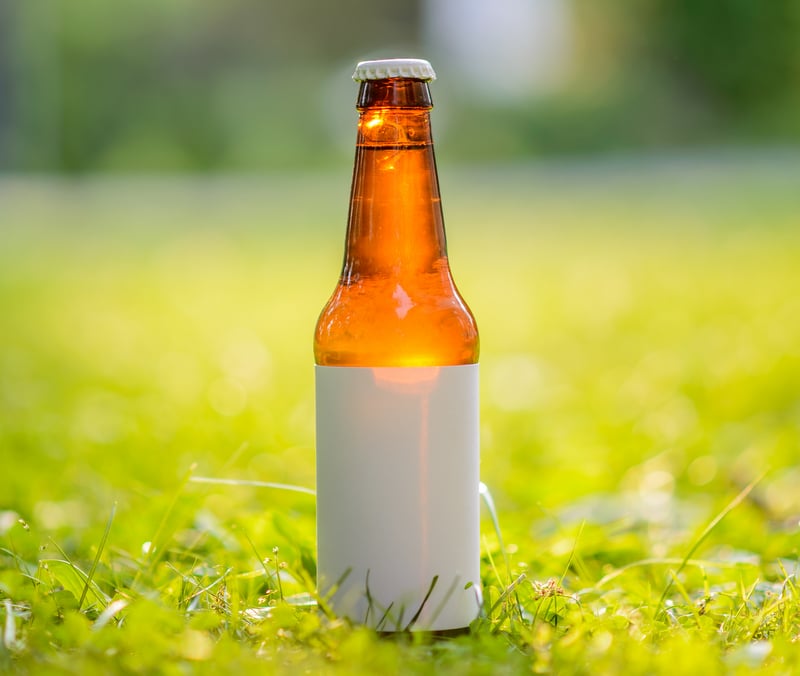
Here’s a simple tutorial on how to do a trademark clearance search. Will that cut the lawyer (i.e., me) out of the picture forever? Probably not. But having this tool will save you time, money and hassle. Do this simple search any time you are considering brewery or beer names. If all of my clients did that, I would have less business — but more smiles. Let’s say I want to start a new business called Singlefin Brewing Co. It exudes a chill, laid-back vibe and riding a singlefin surfboard is possibly the best thing in the world. What now?
1. Google search
Do some digging on Google to see if there is already someone in the United States selling a similar product or service under the name you would like to use. Search for some variations and keep an eye out for anything that is reasonably related to your mark. That really is anything that you could say is in the same general ballpark as your business. Be honest — Ford Tire Repair isn’t going to fly even if you’re selling services, not cars.
Searching for “singlefin” or “single fin” and “beer” turns up a couple items of interest. A brewer in Australia, Gage Roads Brewing Co., sells Single Fin Summer Ale. No worries — trademarks are country-specific. If Gage Roads has any U.S. trademarks, we’ll find out in a minute. Not a problem for now.
Of more concern, Kane Brewing Co. in New Jersey sells a Single Fin Belgian ale as part of their year-round lineup. While they have some rad can designs for their other beers, it looks like Kane may just sell Single Fin in their brewhouse in Ocean, N.J. Hmmm. Should I give up? Change the name to Couch Potato Brewing and hang TVs from all the walls instead of antique surfboards? Not yet. Let’s ride this wave and see where it takes us.
2. Social media search
If Google looks clear, check out other social media sites. Searching Instagram for “single fin beer” turns up a few pics of the Australian ale and one new brewery in Uruguay. Again, not an issue because it’s outside the United States. Facebook doesn’t offer anything different, and neither does BeerAdvocate. I think we’re good there — ride on!
3. Real life search
I advise clients to check trade journals and industry magazines for information on companies that might be using a name but have little or no web presence. One client of mine had an issue with a nano brewery six states away that had no website but made a small batch ale with a name very similar to my client’s brew. Most businesses are going to be online and on Instagram and Snapchat and Facebook. But think of any other real-life sources that might be out there.
4. TESS search
Now we get out of the normal person world and into the legal world a little bit. TESS is the U.S. Trademark Office electronic search system, and you can find it at www.tess2.uspto.gov. Become friends with TESS. It will show you who in the United States has applied for or registered a federal trademark. But being a government website, it’s as user-friendly as a cinderblock.
Basic Search: First do a basic word mark search. Plug whatever name you like into the search term, and it will search for all trademarks that include that term. Use the $ symbol to find all words with a certain root (e.g., brew$ for brewery, brewer, etc.).

This search above would return ALL applicants in ALL classes of goods or services that have the words “single” and “fin” in their trademark. Don’t worry about dead marks — they are marks that have been abandoned or canceled and are not an issue. My search showed a few live marks using the words “Single Fin,” but none that cause great concern. That’s because they are registered in unrelated classes of goods or services.
Every trademark covers a specific class or classes of goods or services. Beer, for instance, is in class 32. Wine and whiskey are in class 33. Artificial flowers are in class 26, but real flowers are in class 31 (the trademark office gets very specific). If you register a trademark, you don’t own rights to that mark used in any context on any product. You own the rights to that mark used in relation to the specific class or classes you registered it in.
For example, Single Fin, LLC in San Diego has applied to register the mark “Single Fin Coffee” for coffee shops and restaurant services in class 43. Is that a conflict for Singlefin Brewing? That depends on whether the Trademark Office deems selling beer a natural extension of the business of providing coffee shop or restaurant services. This is the zone of natural expansion doctrine. The holder of a trademark in one class may get protection over other related types of goods or services, if they are considered a natural expansion of the prior use. The trademark office will look at whether it is common for companies to be involved in both types of business. If a similar mark exists in a related class of goods or services, your application might get rejected. But if a similar mark exists in an unrelated class, it should be no problem.
I know from experience that the trademark office has found beer and coffee to be unrelated, so the Single Fin Coffee mark shouldn’t block registration of a Singlefin Brewing mark. But the trademark office has repeatedly ruled that beer and wine are related goods, so you can’t register a trademark in class 32 for beer if it conflicts with a mark registered in class 33 for wine, and vice versa. It thus makes sense to check for specific conflicts with my proposed mark in both of those classes. We do that with a TESS structured search.
Structured search: Now that you know all about trademark classes, focus the search a bit more to classes that are of specific interest to your proposed business.

To run your own structured search:
- Enter the mark name in the first “Search Term” box.
- Change the field by that box to “Non-Punctuated Word Mark.”
- Make sure the Operator is set to “AND”(this is crucial).
- Enter the class number in the second “Search Term” box in three digit format, e.g., 012 for class 12.
- Change the field by the second box to “International Class.”
- Hit Submit Query.
Nice job, you’ve done your first advanced search on TESS. Now do a few more. Snoop around in the classes you think fit your product or services. Broaden the search to include names that are similar but not identical to yours. The search pictured above is for any mark containing the words “singlefin” or “single fin” in class 33 for wine. I ran the same search in class 32 for beer. Result: Clear! The Australian brewer of Single Fin Summer Ale must not be selling in the United States, and Kane Brewing in New Jersey hasn’t registered a trademark in their Single Fin Belgian ale (ahem, Kane?).
So, should I go ahead with Singlefin Brewing Co.? Well, it’s not a completely open field, so it’s not risk-free. But is the risk of a conflict low enough that I probably won’t have to change my business name after I’ve invested lots of money and time into building a brand? I think yes. There don’t appear to be conflicts that would block registering a federal trademark. The big question is how would Kane Brewing’s use of the Single Fin name for beer in the United States might affect my rights?
In this situation, Kane is what is called the “senior user” and I am the “junior user.” Since Kane hasn’t registered a federal trademark but has been using the mark longer than me, they have rights to the Single Fin name in the geographic area where they are actually selling that beer. If I register a federal trademark, I would have rights to the Singlefin Brewing Co. name across the United States, but as a junior user I would not be able to stop Kane from selling their beer in the area where they had been selling it before I got my registration. There can be more to this analysis that I will cover in another post. But, generally, since I can grab broader federal rights with a registration and have protection everywhere in the country except for potentially one state, I’m comfortable with that, so let’s paddle out! There’s just one last point.
Be honest!

When you’re searching for potential name conflicts anywhere, be honest with yourself. If you think it looks or sounds too similar, you’re probably right. Think about this from the perspective of a customer — are they likely to be confused by similar names and think the products or services came from the same place?
It’s far better to avoid a conflict early, before you’ve poured a ton of money into building your brand, than to get a cease-and-desist letter from an attorney down the road. Having to think about a name-change after you have signage, a website, good online reviews and name recognition is no fun at all. So, take some time, do a search and be honest with yourself about the results. Of course, it’s not a bad idea to have an attorney take a few minutes to run a search too, just to be on the safe side.
Tom Dietrich is a dad, husband, trail runner and lawyer. Four years ago he said goodbye to a mega law firm in Orange County and moved to the pines of northern Arizona. From the base of a mountain at 7,000 ft, Dietrich gives advice to startups, small businesses, breweries, authors, artists and other content creators on trademarks, copyrights, trade secrets, nondisclosure agreements, patent clearance and other intellectual property and business issues. Dietrich has more than 10 years of experience and is licensed to practice in Arizona, California, Oregon (inactive) and New Mexico (inactive). He is happy to talk IP (and beer), and you can reach him through www.flagip.com.





Leave a Reply
You must be logged in to post a comment.